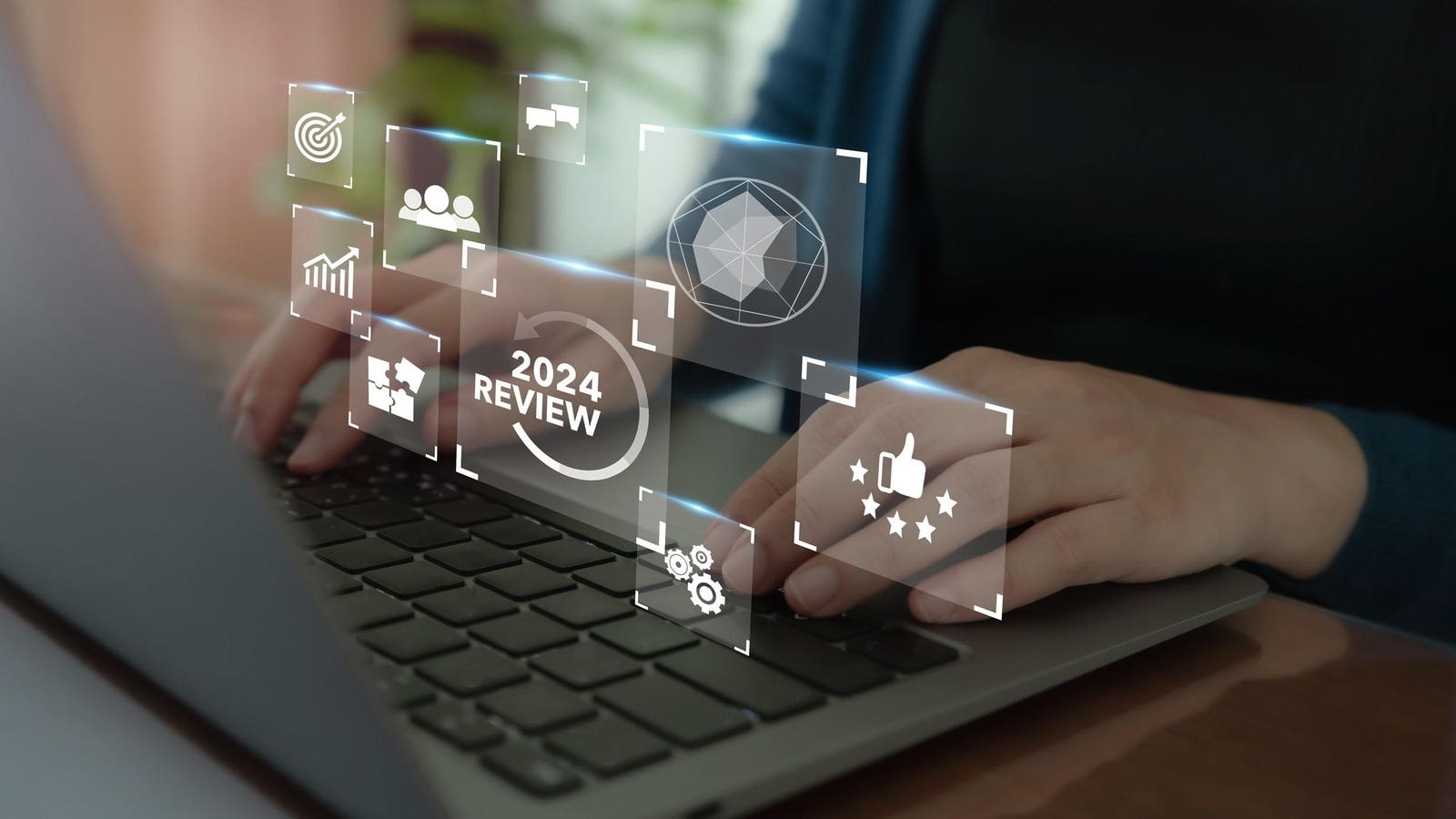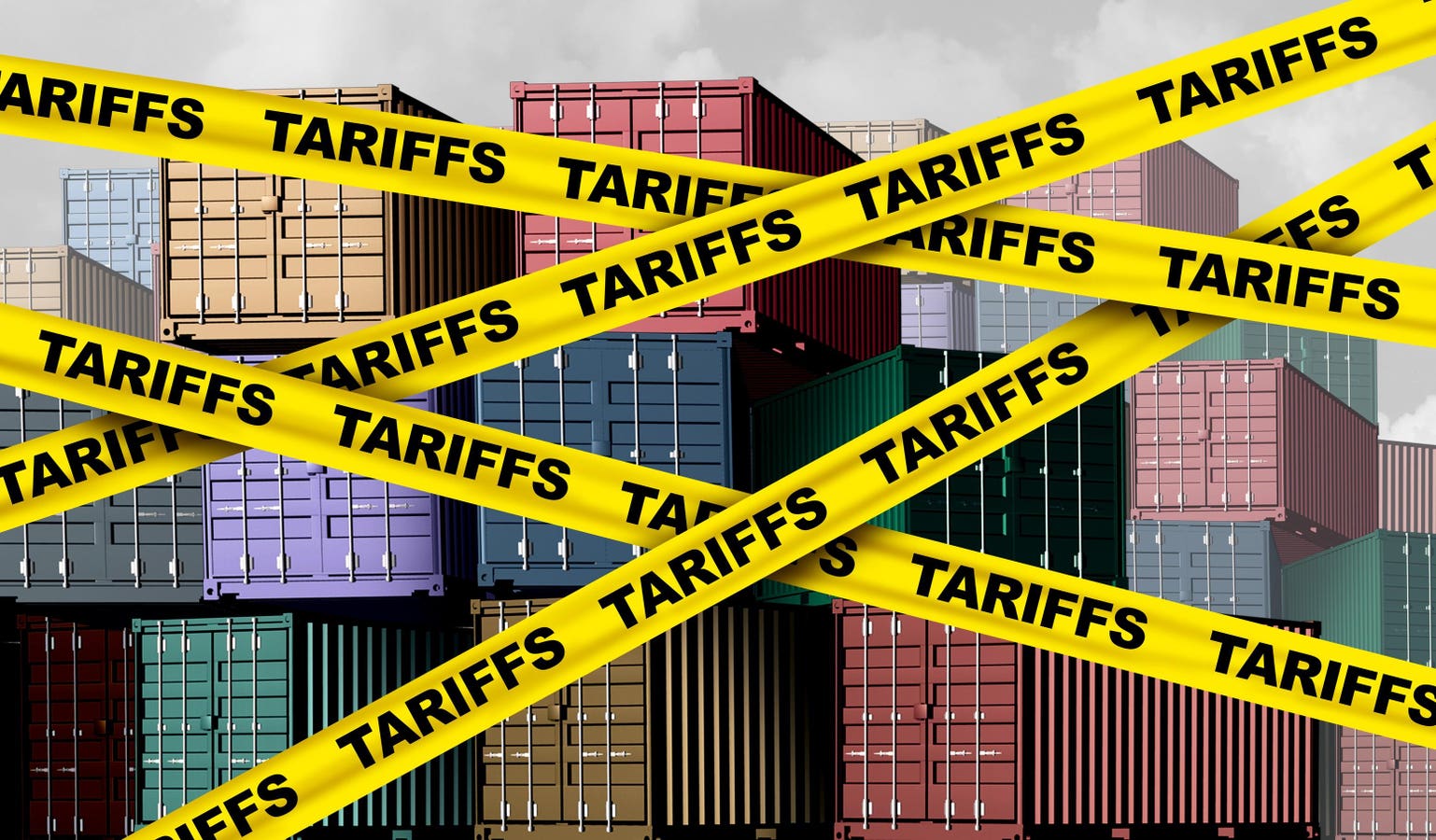Innovation and Technology
Revolutionary Tech Developments That Defined

Technological Breakthroughs of 2024: A Year of Unprecedented Innovation
Artificial Intelligence Impacts Elections
2024 marked a significant year for democratic processes worldwide, with major elections, including India’s record-breaking democratic exercise and the closely watched U.S. presidential election. Emerging technologies, particularly AI, played an unprecedented role in shaping these electoral landscapes. Campaign teams leveraged AI for voter analysis and engagement, developing sophisticated outreach strategies and real-time response systems. However, this technological integration also brought new challenges, as election officials and tech companies worked to address concerns about deepfakes and automated misinformation. The year demonstrated how AI tools could both enhance democratic participation through improved voter engagement and simultaneously create new challenges for maintaining electoral integrity.
Future War: Technology On The Battlefields Of Ukraine
The ongoing war in Ukraine has established itself as the most high-tech conflict in human history, defined by drone warfare, robotic dog soldiers and cyber-warfare. Beyond this, we’ve seen NGOs deploying facial recognition technology to identify perpetrators of war crimes and new forms of hypersonic missiles never before used in conflict.
Amazing Discoveries And Breakthroughs In Sustainability Tech
Perhaps the most pressing challenge facing technologists in 2024 has involved developing real-world solutions for the climate emergency. One field that has seen significant advances has been the development of carbon capture technologies, such as the microbial solution demonstrated by researchers this year. Together with new developments in battery storage, renewable energy and electrocaloric cooling, which could pave the way to more energy-efficient refrigeration, important progress continues to be made.
Technology Beyond The Final Frontier
As scientists and engineers continue working towards human colonization of Mars, perhaps 2024’s most impressive space-tech achievement was the successful “catch” of the Space X Super Heavy booster Starship rocket. Following re-entry into the Earth’s atmosphere, the arms of the 146-meter (480 ft) “Mechazilla” tower were used to stabilize and land the rocket. In other space news, in 2024 India joined the U.S., Russia and China to become the fourth country to land on the moon.
Quantum Computing Records Smashed
While work progressed on applying quantum computing to everyday tasks and applications, back in the lab, records were once again smashed when unparalleled levels of performance were achieved. The 56-qubit H2-1 computer built by Quantinuum overtook the previous record set by Google’s Sycamore platform by a factor of more than 100. While quantum computing won’t be useful for every type of application, it has the potential to revolutionize fields such as solving optimization and cryptography, where it could enable complex computational tasks to be carried out hundreds of millions of times more quickly.
First T-Cell Therapy To Treat Solid Tumors Receives FDA Approval
Notable breakthroughs in biotechnology in 2024 included the first FDA approval for a personalized immunotherapy treatment targeting T-cells, designed to help the body’s immune system target solid tumor cells. This engineered cell therapy was granted accelerated approval following early-stage trials in which Tecelra, developed genetically modifying a patient’s own white blood cells, was found to be effective at shrinking tumors in 44% of patients.
Conclusion
As we reflect on 2024’s technological milestones, it’s clear that we’re living through a period of unprecedented innovation and change. While these developments bring immense promise – from revolutionary cancer treatments to sustainable energy solutions – they also present new challenges that society must carefully navigate. As we look ahead to 2025, the pace of technological advancement shows no signs of slowing, suggesting that we’re only at the beginning of what promises to be a transformative decade in human history.
FAQs
* What was the most significant achievement in AI in 2024?
+ AI played an unprecedented role in shaping democratic processes worldwide, with major elections in India and the U.S. leveraging AI for voter analysis and engagement.
* What was the most notable development in space technology in 2024?
+ The successful “catch” of the Space X Super Heavy booster Starship rocket and India’s first successful moon landing.
* What was the most important breakthrough in sustainability tech in 2024?
+ The development of carbon capture technologies, such as the microbial solution demonstrated by researchers this year, and new developments in battery storage, renewable energy and electrocaloric cooling.
Innovation and Technology
New Tariffs Impact on Global Services Market

Introduction to the Impact of Tariffs on the Global Services Market
A lot of our clients, especially CIOs and Global Business Services (GBS) executives, are asking about the effects of the new tariffs on the global services market. The most important impact of tariffs is their effect on the broader macroeconomy. Currently, we are seeing many firms postpone projects and move to a more defensive posture. As the uncertainty continues, we anticipate that enterprises will further curtail their discretionary spending. It is likely that a slowing economy will shift focus away from spending to support growth to cost-cutting initiatives.
Regarding the Potential for Tariffs Levied on Services
As of today, it does not look like there will be tariffs on services. And it’s highly unlikely that even if the tariff wars intensify that there will be tariffs on services. There are numerous reasons for this conviction. However, the primary reasoning is the level of difficulty in executing a tariff strategy on services. Simply put, there is no clean way for any country to put tariffs on invisible exports, such as services, without creating tremendous unintended consequences.
However, there has been some talk that the EU and India will put tariffs/taxes on US firms. These new taxes could be levied on the US firms’ IP and cloud services. That said, it seems that this talk is primarily aimed at creating bargaining leverage for the upcoming trade negotiations and likely will not materialize in actual fact. If the move to tax US IP and cloud services does move forward, we think they will have a modest to negligible effect. Taxes on US cloud services will be easy to evade. There is already substantial processing power in the EU and other untariffed countries. Firms such as AWS, Microsoft, and Google, as well as their clients, will quickly transfer workloads to these centers.
The Modi Administration Positions to Increase Taxes on Services Delivered in India
Modi has signaled that he and his administration are considering increasing the tax levied on services exported to the US and other countries. At this time, this appears to be talk aimed at creating bargaining leverage for future trade talks. However, if they do move forward with these taxes, they will modestly increase the cost of firms’ buying services originating in India. As these taxes have yet to materialize, it is hard to know if they will affect third-party services and GCCs/captives in the same way.
Other Real Dangers to Worry About
Other potential moves by the Trump administration may impact the global business services market. Clearly, this administration has a restrictive view of immigration. At the outset, their early moves have largely focused on the undocumented at our southern and northern borders. These immigrants have very little impact on the services industry. But, if the administration moves to tighten eligibility for H1B and L1 visas, this could adversely affect the services industry modestly. This is a play we have seen before. This time, the industry is well prepared to cope with these potential changes and will lean on the learnings from their experience with the last Trump administration. For that reason, we think this will have a de minimis impact on the global services industry if it happens.
Even the Most Aggressive Tariffs Will Have a Modest Impact Compared with the Growing Impact of AI
Here is the biggest worry for global services executives: the emerging impact of AI on services. This development seems to be much more profound than the threatened tariffs. Companies are becoming more efficient in using AI to do their own development. We believe the impact of AI is likely to be far more significant both in the short run and long-term than the potential impact of tariffs to restructure global trade that the Trump administration is attempting.
We are already seeing firms deploying AI in their IT development and at the same time shifting work in house from third-party vendors. This phenomenon has been at the heart of the slow recovery of IT services spend. Additionally, we are starting to see new system-of-action software eat into both IT and BPO workloads. As this AI revolution unfolds, it is likely to threaten the core assumption around labor arbitrage on which the modern services industry is built on. Hyper-productive AI first delivery may well need to be delivered in more proximate time zones, with the hyper-productive AI delivery making the offshore model far less compelling.
Conclusion
The impact of tariffs on the global services market is a complex issue, but it seems that the tariffs will have a modest effect on the industry. The bigger challenge is the emerging impact of AI on services, which is likely to be far more significant in the short and long term. The industry needs to prepare for this change and transform its operating models to remain competitive.
FAQs
- Q: Will there be tariffs on services?
A: It is unlikely that there will be tariffs on services due to the difficulty in executing a tariff strategy on invisible exports. - Q: How will the Modi administration’s potential tax increase on services delivered in India affect the global services market?
A: The tax increase will modestly increase the cost of firms buying services originating in India, but its impact is unclear as it has yet to materialize. - Q: What is the biggest worry for global services executives?
A: The emerging impact of AI on services, which is likely to be far more significant than the threatened tariffs. - Q: How will the AI revolution affect the global services industry?
A: The AI revolution will threaten the core assumption around labor arbitrage, making the offshore model less compelling, and will require the industry to transform its operating models to remain competitive.
Innovation and Technology
China’s AI Assistants Pose Privacy Risks

The global artificial intelligence industry is shifting towards the development of intelligent agents that can plan, execute, and assist across multiple domains. These tools are designed to handle tasks autonomously, sometimes with minimal prompting. In China, the rise of “screen-aware” agents, AI assistants that can view, interpret, and act based on what’s displayed on the user’s screen, represents a significant shift in how AI is being embedded into everyday computing.
The Rise of Doubao AI
One notable example is ByteDance’s Doubao AI, a consumer-facing assistant that introduced a Screen Sharing Call feature. With the user’s permission, the tool gains visibility over everything currently shown on the desktop during a voice interaction. It can read WeChat conversations, solve math problems on-screen, identify active applications, and summarize video clips – all without switching context. This design echoes Microsoft’s Recall feature, which was built to help users remember on-screen activities by capturing snapshots.
Technical Enablers and Privacy Concerns
The key technical enabler behind Doubao AI’s feature is access to a system-level setting known as accessibility services. Originally designed to help users with disabilities, this permission grants apps the ability to view and interact with nearly all visual elements on the screen. While the feature does request user consent, the language used is often technical, and the implications are not always clear. The information interpreted by Doubao AI is uploaded to ByteDance’s servers for processing, introducing concerns about data storage, misuse, and unauthorized access.
An Ecosystem-Level Shift
Doubao isn’t an outlier; other Chinese developers are rolling out screen-aware capabilities. Zhipu AI’s GLM-PC can carry out cross-application tasks on the desktop, while AutoGLM is focused on browser-based actions. Smartphone manufacturers like Xiaomi, OPPO, Honor, and Vivo are embedding similar AI functions at the system level, often relying on accessibility permissions to parse visual content. In some cases, these integrations happen with minimal user notification, shifting more responsibility onto users to understand what they’ve enabled.
Diverging Philosophies
The differing responses to screen-aware AI in China and the West reflect deeper contrasts in how AI is being developed and governed. In the U.S. and Europe, AI assistants are typically sandboxed using formal APIs, explicit tool integrations, and clear scopes of action. Developers emphasize consent mechanisms and often shape deployment timelines around public feedback. In China, the reliance on accessibility services and GUI-based interpretation allows for quicker integration across apps and platforms but often with less granular control.
Balancing Promise and Risk
Screen-aware assistants are not inherently problematic; used carefully, they can enhance productivity, improve accessibility, and simplify digital tasks. However, the impact depends on how they’re implemented and how well users understand them. Key challenges include transparency, consent, boundaries, and data handling. Without clear answers to these questions, screen-sharing by default could become normalized before its implications are fully understood.
Looking Ahead
As AI assistants evolve into intelligent agents capable of multistep reasoning and cross-platform actions, visual context will almost certainly become part of their toolkit. The question is not whether this trend will continue but whether the industry builds the right infrastructure to ensure it’s done responsibly. China’s deployment of these tools offers a preview of what’s technically possible and where frictionless design can lead. It also provides a cautionary tale: powerful AI features introduced without transparency risk undermining trust just as AI enters more personal spaces.
Conclusion
The development of screen-aware AI assistants represents a pivotal shift in how we interact with machines. For these assistants to be true partners, they must be built on a foundation of clarity, respect, and informed choice. Developers, regulators, and users alike would benefit from treating screen-aware agents not as a niche product tweak but as a fundamental change in the relationship between humans and technology. By addressing the challenges of transparency, consent, and data handling, we can ensure that the benefits of screen-aware AI are realized while minimizing the risks.
FAQs
- What are screen-aware AI assistants?
Screen-aware AI assistants are tools designed to view, interpret, and act based on what’s displayed on the user’s screen, enhancing their ability to provide contextual help and assistance. - How do screen-aware AI assistants work?
These assistants work by accessing system-level settings such as accessibility services, which allow them to view and interact with nearly all visual elements on the screen. - What are the benefits of screen-aware AI assistants?
The benefits include enhanced productivity, improved accessibility, and simplified digital tasks, as they can provide more relevant and contextual help based on what’s currently displayed on the screen. - What are the concerns associated with screen-aware AI assistants?
Concerns include transparency, consent, boundaries, and data handling, as the feature may upload interpreted data to servers for processing, raising questions about data storage, misuse, and unauthorized access. - How can the risks associated with screen-aware AI assistants be mitigated?
The risks can be mitigated by ensuring transparency, obtaining clear and informed consent, setting boundaries on what the assistant can see or do, and implementing robust data handling practices that respect user privacy.
Innovation and Technology
DEIA Reporting Made Easy: Tools for Measuring and Improving Outcomes

Software and platforms for DEIA (Diversity, Equity, Inclusion, and Accessibility) reporting have revolutionized the way organizations measure and improve their outcomes. With the help of these tools, companies can now easily track their progress, identify areas for improvement, and make data-driven decisions to foster a more inclusive and diverse work environment. In this article, we will explore the world of DEIA reporting and provide an overview of the tools and platforms available to make this process easier.
What is DEIA?
Before we dive into the tools and platforms, it’s essential to understand what DEIA means and why it’s crucial for organizations. DEIA stands for Diversity, Equity, Inclusion, and Accessibility, which are the four pillars of creating a fair and inclusive work environment. Diversity refers to the presence of different groups or individuals with unique characteristics, such as race, gender, age, or ability. Equity ensures that everyone has equal access to opportunities and resources, while Inclusion creates a sense of belonging and respect among all employees. Accessibility refers to the physical and technological environment, ensuring that everyone can participate and contribute.
Benefits of DEIA Reporting
DEIA reporting is essential for organizations as it helps them identify areas for improvement, track progress, and make informed decisions. By measuring DEIA outcomes, companies can improve their reputation, increase employee engagement, and enhance their overall performance. DEIA reporting also helps organizations comply with regulations and laws, reducing the risk of lawsuits and reputational damage.
Tools for DEIA Reporting
There are various tools and platforms available to make DEIA reporting easier and more efficient. These tools can be categorized into several types, including survey and assessment tools, data analytics platforms, and reporting and dashboard tools. Some popular tools for DEIA reporting include:
Survey and Assessment Tools
Survey and assessment tools help organizations collect data on employee experiences, attitudes, and perceptions. These tools can be used to conduct employee surveys, focus groups, and interviews. Popular survey and assessment tools include Culture Amp, 15Five, and SurveyMonkey.
Data Analytics Platforms
Data analytics platforms help organizations analyze and interpret DEIA data, providing insights and recommendations for improvement. These platforms can be used to track diversity metrics, analyze employee engagement, and identify trends and patterns. Popular data analytics platforms include Tableau, Power BI, and Domo.
Reporting and Dashboard Tools
Reporting and dashboard tools help organizations create visual representations of their DEIA data, making it easier to track progress and identify areas for improvement. These tools can be used to create customized dashboards, reports, and scorecards. Popular reporting and dashboard tools include Google Data Studio, Microsoft Power BI, and Tableau.
Best Practices for DEIA Reporting
To get the most out of DEIA reporting, organizations should follow best practices, including:
Setting Clear Goals and Objectives
Setting clear goals and objectives is essential for effective DEIA reporting. Organizations should define what they want to achieve, how they will measure progress, and what actions they will take to improve outcomes.
Collecting and Analyzing Data
Collecting and analyzing data is critical for DEIA reporting. Organizations should use a combination of quantitative and qualitative data to get a comprehensive understanding of their DEIA outcomes.
Creating a DEIA Strategy
Creating a DEIA strategy is essential for improving outcomes. Organizations should develop a plan that outlines their goals, objectives, and actions, and regularly review and update their strategy to ensure progress.
Common Challenges in DEIA Reporting
Despite the benefits of DEIA reporting, organizations often face challenges, including:
Lack of Data
One of the most common challenges in DEIA reporting is the lack of data. Organizations may not have the necessary data to track progress, or they may not know how to collect and analyze data effectively.
Resistance to Change
Resistance to change is another common challenge in DEIA reporting. Organizations may face resistance from employees who are not comfortable with the idea of change or who do not see the value in DEIA reporting.
Limited Resources
Limited resources is another challenge that organizations may face in DEIA reporting. Organizations may not have the necessary budget, time, or personnel to dedicate to DEIA reporting.
Conclusion
DEIA reporting is essential for organizations that want to create a fair and inclusive work environment. With the help of software and platforms for DEIA, companies can easily track their progress, identify areas for improvement, and make data-driven decisions. By following best practices, such as setting clear goals and objectives, collecting and analyzing data, and creating a DEIA strategy, organizations can overcome common challenges and improve their DEIA outcomes. Remember, DEIA reporting is not a one-time task, but an ongoing process that requires continuous effort and commitment.
Frequently Asked Questions
Here are some frequently asked questions about DEIA reporting:
What is DEIA reporting?
DEIA reporting refers to the process of tracking and measuring an organization’s diversity, equity, inclusion, and accessibility outcomes.
Why is DEIA reporting important?
DEIA reporting is essential for organizations as it helps them identify areas for improvement, track progress, and make informed decisions.
What are some common challenges in DEIA reporting?
Common challenges in DEIA reporting include lack of data, resistance to change, and limited resources.
How can organizations overcome these challenges?
Organizations can overcome these challenges by setting clear goals and objectives, collecting and analyzing data, and creating a DEIA strategy.
What are some popular tools for DEIA reporting?
Popular tools for DEIA reporting include Culture Amp, 15Five, SurveyMonkey, Tableau, Power BI, and Domo.
-

 Career Advice5 months ago
Career Advice5 months agoInterview with Dr. Kristy K. Taylor, WORxK Global News Magazine Founder
-

 Diversity and Inclusion (DEIA)5 months ago
Diversity and Inclusion (DEIA)5 months agoSarah Herrlinger Talks AirPods Pro Hearing Aid
-

 Career Advice5 months ago
Career Advice5 months agoNetWork Your Way to Success: Top Tips for Maximizing Your Professional Network
-

 Changemaker Interviews4 months ago
Changemaker Interviews4 months agoUnlocking Human Potential: Kim Groshek’s Journey to Transforming Leadership and Stress Resilience
-

 Diversity and Inclusion (DEIA)5 months ago
Diversity and Inclusion (DEIA)5 months agoThe Power of Belonging: Why Feeling Accepted Matters in the Workplace
-

 Global Trends and Politics5 months ago
Global Trends and Politics5 months agoHealth-care stocks fall after Warren PBM bill, Brian Thompson shooting
-

 Global Trends and Politics5 months ago
Global Trends and Politics5 months agoUnionization Goes Mainstream: How the Changing Workforce is Driving Demand for Collective Bargaining
-

 Training and Development5 months ago
Training and Development5 months agoLevel Up: How Upskilling Can Help You Stay Ahead of the Curve in a Rapidly Changing Industry





















